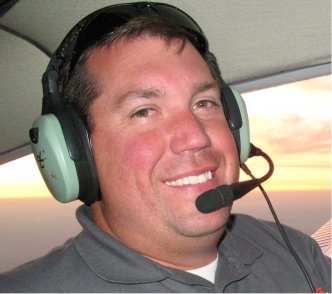Want students at your flight school to pass more checkrides with your local designated pilot examiners (DPEs)? I hope your answer to that basic question is yes. There are a few things you can do to help make sure they do.
As an examiner, I am a little less comfortable conducting a practical test in an unfamiliar situation. If I have never seen the aircraft before, I don’t know anything about the maintenance history, I have never heard of the instructor, or I don’t know what type of training the student has had, I am always a little more on edge. This is pretty easy for a flight training provider to remedy.
Here are a few tips that can help increase your operation’s pass rate.
Help the examiner get to know your training procedures. If you have syllabus material, a curriculum, pilot’s operating handbooks, training course outlines, operational specifications, or any other materials that govern or guide how you conduct training, share them with the examiner before practical tests. If you have these documents in PDF format, even better. I have copies of these types of documents for many of the flight schools where I conduct practical tests. In my case, most of these reside on my iPad. They help me to understand how students are trained and how they will conduct themselves and demonstrate knowledge and skills on a practical test.
Discuss your maintenance with the examiner. Just having your students show the examiner that the last annual or pitot-static check is within required time frames isn’t always enough to instill confidence that the examiner is safe getting into the airplane. As a professional operation, take the initiative to talk with the DPE personally about your maintenance procedures, policies, and practices for keeping your aircraft not only airworthy, but up to a quality standard for training and testing. The business owner or the mechanic can have this chat with the examiner, but don’t just leave it to your students (customers) when they show up for a practical test. There is nothing scarier to an examiner than having to wonder whether the airplane he or she is going to fly is safe enough to make it through the test and back to the ground.
Help the examiner to be able to provide you more services. Not every examiner is familiar with every particular make and model of aircraft or avionics system. An examiner who is not familiar with either of these may not be comfortable or even allowed to provide practical tests in a particular aircraft or system.
A great example is the requirement for an examiner (and instructor) to have more than five hours experience as pilot in command in the make and model of a multiengine aircraft to be able to provide practical tests (or for an instructor, instruction). If you have a multiengine aircraft in which you are providing training but are having a hard time finding examiners qualified to conduct tests, consider helping the examiner get the required experience. This could enhance your long-term ability to have a ready and available examiner for your students’ practical test needs.
While it may not be an hours requirement, familiarity with new or changing avionics systems also can be a dissuading factor for examiners when considering providing practical tests. If you have something new or with which local examiners are not familiar, consider hosting an examiner training day during which your staff spends time with them to help them become familiar with the systems. Using simulators can be a great way to allow examiners to have some time building familiarity so they will at least understand which buttons your students are pushing and why. At the bare minimum, consider sharing any training materials, documents, or checklists related to the avionics systems.
Last—and probably most important—get to know the examiner. Invite an examiner to your flight school periodically to get to know your staff, meet some students, or just to meet the people running your facility. This can help provide an opportunity for students and staff to meet the DPE in a relaxed atmosphere, and give the examiner a chance to ask any questions he or she may have well before a practical test has begun.
These simple steps can help examiners working with your flight school become more comfortable and more knowledgeable about your operation as they provide practical test services. When they know what to expect, they are better able to evaluate whether your students are performing to practical test standards and within the guidelines of the training they have been provided. When this happens, in most cases, pass rates increase.



